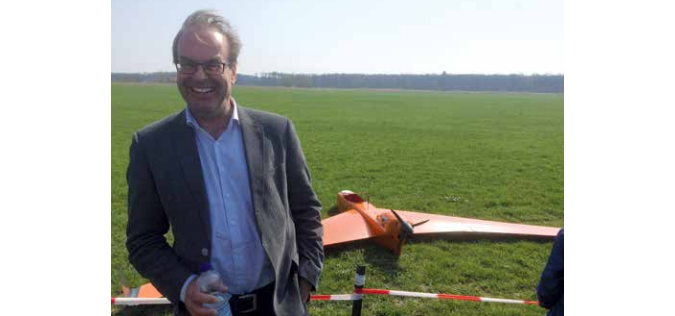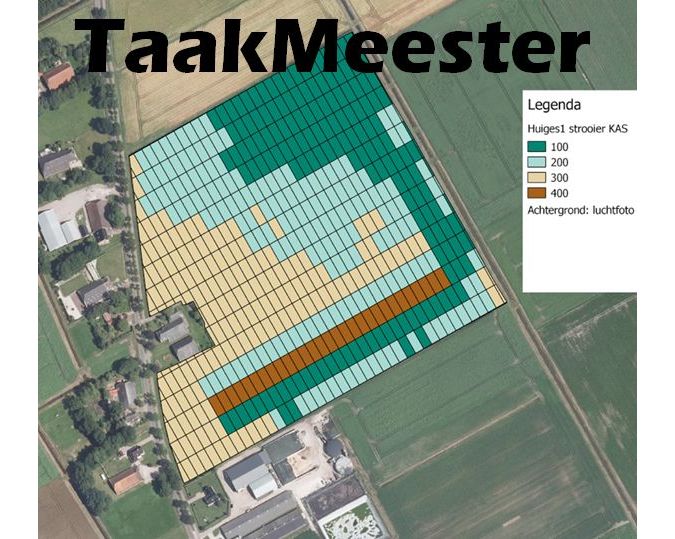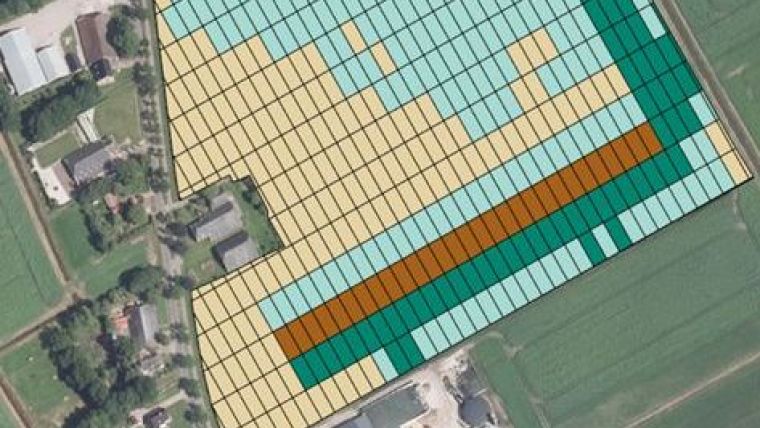Precision Agriculture for People, Planet and Profit
A Policy Perspective on Data-driven Farming
The Dutch Ministry of Agriculture, Nature and Food Quality (LNV) has a clear vision: sufficient food that is also healthy for everyone – financially healthy for farmers, growers and fishermen, healthy for consumers and good for nature and the environment. In a nation as small and populous as The Netherlands, that is not without its challenges. Furthermore, the Dutch government is focusing heavily on expertise and innovation in order to strengthen the international position of the country’s agricultural sector. Precision agriculture has been identified as one of the ways to achieve these goals. But does data automatically mean knowledge and – subsequently – action?
As the name suggests, precision agriculture is a very precise, tailor-made approach to farming. There is a general trend towards farming becoming more information-intensive, stimulated by factors such as safeguarding profitability and the need for sustainable production methods. Precision agriculture forms part of this. These developments are evident in virtually all areas of agriculture, from dairy farming and arable farming to greenhouse horticulture. New technologies, ICT, the internet and big data are all advancements enabling the digitalization of farming. What is interesting is that the position – or autonomy – of the farmer has changed too. Over the years the government has introduced rules to improve the sustainability of farming, and the market also has a significant effect on what should be produced and how (and at what price). In effect, the farmer has become part of a dense network of suppliers of equipment and seeds, of customers (retailers and consumers), and of consultants and the government. At the core of that network, i.e. the production activities, large volumes of data are used and generated – and that data is what makes the farmer so interesting for the other stakeholders.
Site-specific crop management is still some way off
In the early days of precision agriculture in arable farming, it was primarily about the use of GPS technology to drive in straight lines (in grid systems) in order to reduce waste (e.g. of seeds, fertilizers, crop protection agents, fuel). This approach has since become relatively common. However, research has shown that other applications focused on time-specific and site-specific crop management – such as working with prescription maps (see box) for variable dosing (e.g. fertilizers, crop protection, water, calcium, etc.) – have not [1], even though the relevant technology is available. The government faces the question of what is holding back the broad adoption of precision agriculture, including whether the cause lies in legislation. It is LNV’s job to answer this, which is why I talked to Frans Lips, senior policymaker for the Directorate-General for Agriculture and Rural Development from LNV. He has been involved in precision agriculture and geodata for some time: “That question gave us reason to first gain a clear picture of the current status of precision agriculture in arable farming across the board, i.e. its usage, the education of farmers, the IT, legislation and the business case. It’s a 360-degree perspective because all stakeholders are involved in creating it.” The study was conducted by WUR and got under way in August 2016. In February 2017 a report was presented to the House of Representatives of the Netherlands. There appear to be some considerable obstacles preventing farmers from using precision agriculture methods in practice. So why are farmers not taking advantage of the opportunities? “Precision agriculture involves a lot of technology and IT. Many suppliers provide partial solutions, but there are not enough suppliers offering an integrated solution. For farmers it is often too complex to connect all those partial solutions together and import all the data into their own management system.

Another reason is the financial imbalance; farmers are required to make a substantial investment, without having clarity on the actual returns. Moreover, they are dependent on external consultants and IT companies, which drives up the costs even further, and they themselves lack the knowledge to decide what they really need,” explains Frans. Practical matters such as connectivity can also stand in the way of the application of precision technology. Internet connectivity is still an issue in some places. One interesting hurdle is the matter of data ownership. Where does the data that is generated actually end up? Is the data owned by the farmer, or by the system that stores it, or by the supplier/service that provides access to it? It helps when this question is answered in a way that gives the farmer certainty. The data gathered does not tell farmers how to act. In other words, if part of the crop is lagging behind in terms of growth, the data alone does not indicate why, and what should be done. Farmers are therefore often forced to rely on their own knowledge about their land, which means the data is underutilized. Using the huge volumes of data and knowledge, however, it is possible to develop algorithms that can suggest corrective measures. Data-driven and technology-driven advancements are already being made. The question is, to what extent is the farmer being involved?
NPPL as a network for learning
LNV regards a broader application of precision agriculture as important. Precision agriculture makes it possible to achieve a better yield, while reducing the environmental impact. Reductions in the use of fuel, crop protection agents and artificial fertilizers contribute to a better world and the accomplishment of climate goals. Frans: “That’s why the ministry is investing in projects and research in order to take this step. However, many projects within the government’s ‘Top Sector’ programme are focused more on R&D and less on the practical adoption of innovations, which is why we’ve launched the National Experimental Ground for Precision Farming (NPPL). NPPL wants to close the gap between tried-and-tested methods, methods for precision agriculture that are considered ready for practical application, and actual usage. It’s about stimulating, motivating, actively supporting and providing guidance.” To reach this point, in the summer of 2017 LNV and WUR organized a meeting bringing together the precision agriculture community, including farmers, suppliers, contract workers and scientists as well as representatives from government, education and industry associations such as the Southern Agriculture and Horticulture Organization (ZLTO). The aim was to determine which methods are ready for use in practice. This resulted in six being chosen, including nematode management, variable-rate liming, location-specific fertilization and variable plant spacing. Six farmers were then selected to each work with one method, supported by WUR advisors. “Through the NPPL we expect to successfully help farmers to apply methods in practice so we overcome obstacles. Besides that, we want to actively share their experiences so that others can learn from them,” comments Frans.
So it is a network for learning, in other words. Dutch trade journal De Boerderij is a partner and provides support through a website where participants share their experiences, as well as through chat groups, seminars and the magazine De Boerderij itself which reports on the experiences within the NPPL. A Facebook group was set up recently, and has already attracted hundreds of followers. It is a place where questions and problems are actively posted and answered by the community, including on practical issues such as resolving errors in an XML.

Stimulation through open data
LNV is allowing the open data policy to help stimulate the application of precision agriculture, namely by providing free access to relevant data. Examples of this include PDOK, a publicly funded (including by LNV) platform for geodatasets providing open data on things like topography and height (AHN), the Dutch Satellite Data Portal (satellietdataportaal.nl) where users can freely access detailed satellite data about The Netherlands, and the fact that the national soil map has been available as open data since 2017. But that’s not all. There are plans to increase the user benefit of the soil map by adding details based on data from satellites and drones and by producing susceptibility maps: for siltation, soil compaction, acidification, subsidence, loss of organic matter and dryness. This data – a combination of location-based sensor data and knowledge about crop production – will generate a wealth of intelligence in the long term. Precision agriculture will then become even more effective thanks to also telling farmers how to act. In order to improve the access to and use of data sources that are important for the agricultural sector, WUR is working on data infrastructure called AgroDataCube. This platform will provide clear and secure access to governmental open-data sources and company-owned data for use in developing applications. Looking ahead to the future, Frans says: “Precision agriculture can evolve into a way of working in the sector that sees advanced technology helping nature-inclusive values and ecological knowledge to become an integral part of the business approach. This can improve the natural resilience and vitality of crops (less risk of diseases and pests) while simultaneously improving the biodiversity, the soil quality and the rural environment. These developments contribute to a strong and sustainable farming sector that is valued by society as a whole.”
In precision agriculture, technologies such as GPS, sensors, ICT and robots help to ensure that plants (or animals) receive precisely the treatment they need. The major difference is that in traditional agriculture farmers work per field, whereas in precision agriculture decisions are made per square metre or even per plant in what is known as ‘site-specific crop management’.
Further Reading
[1] https:/www.farmhack.nl/taakmeester-over-taakkaarten-uitdrone-beelden (in Dutch)
The original version of this article was published (in Dutch) in Geo-Info (issue 4, 2018), the magazine of the Geo-informatie Nederland (GIN) Association.

Value staying current with geomatics?
Stay on the map with our expertly curated newsletters.
We provide educational insights, industry updates, and inspiring stories to help you learn, grow, and reach your full potential in your field. Don't miss out - subscribe today and ensure you're always informed, educated, and inspired.
Choose your newsletter(s)
























